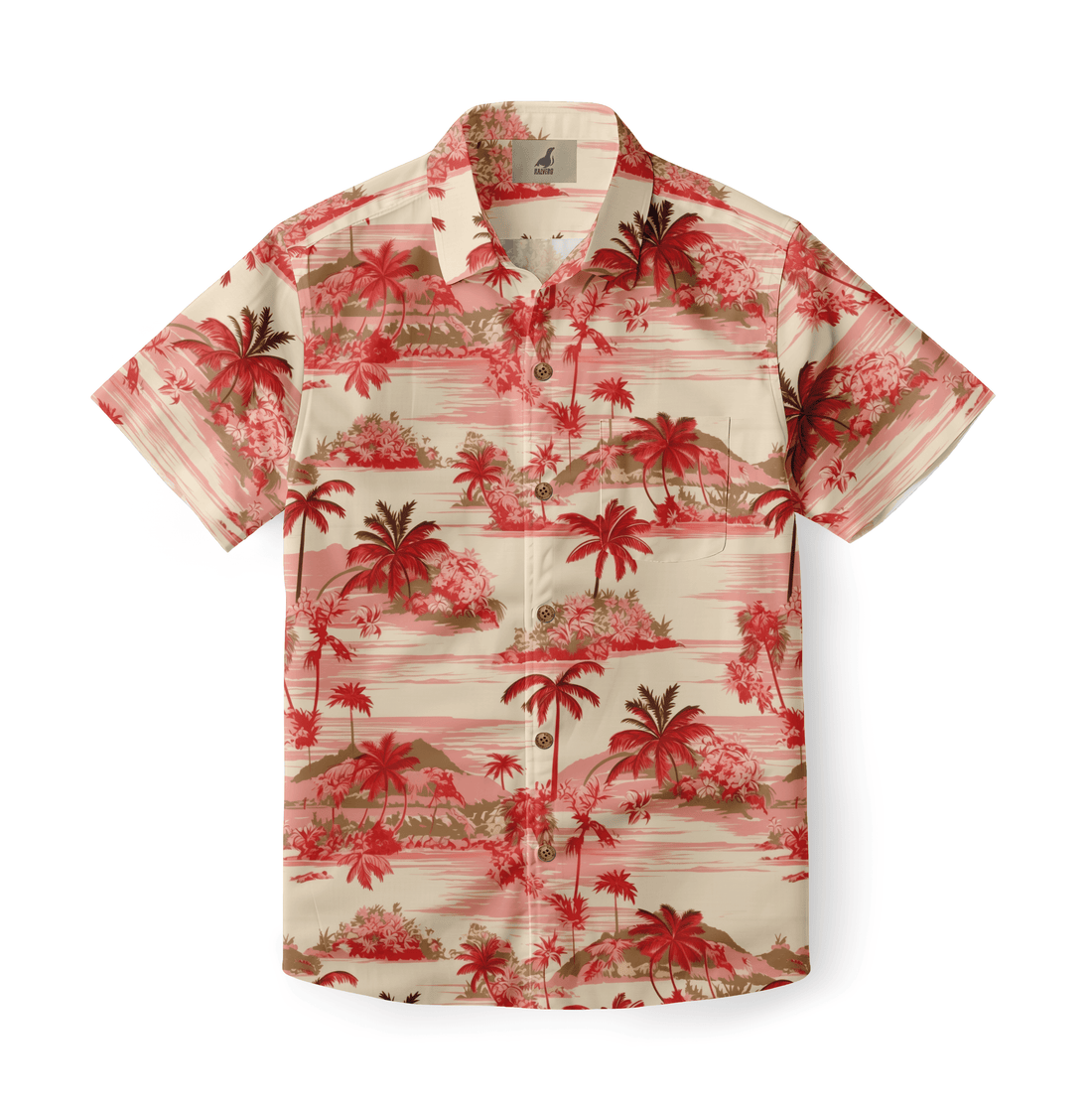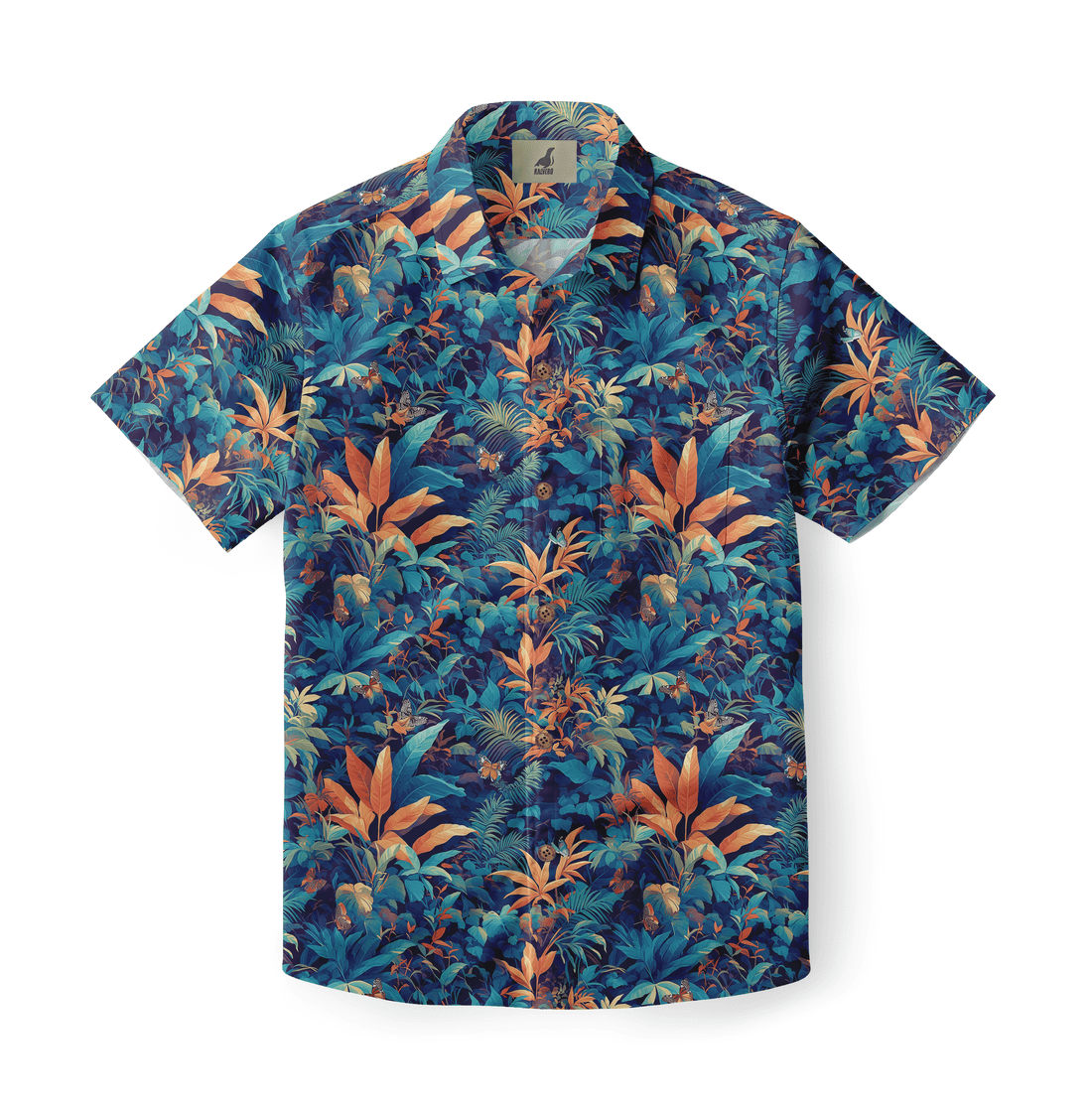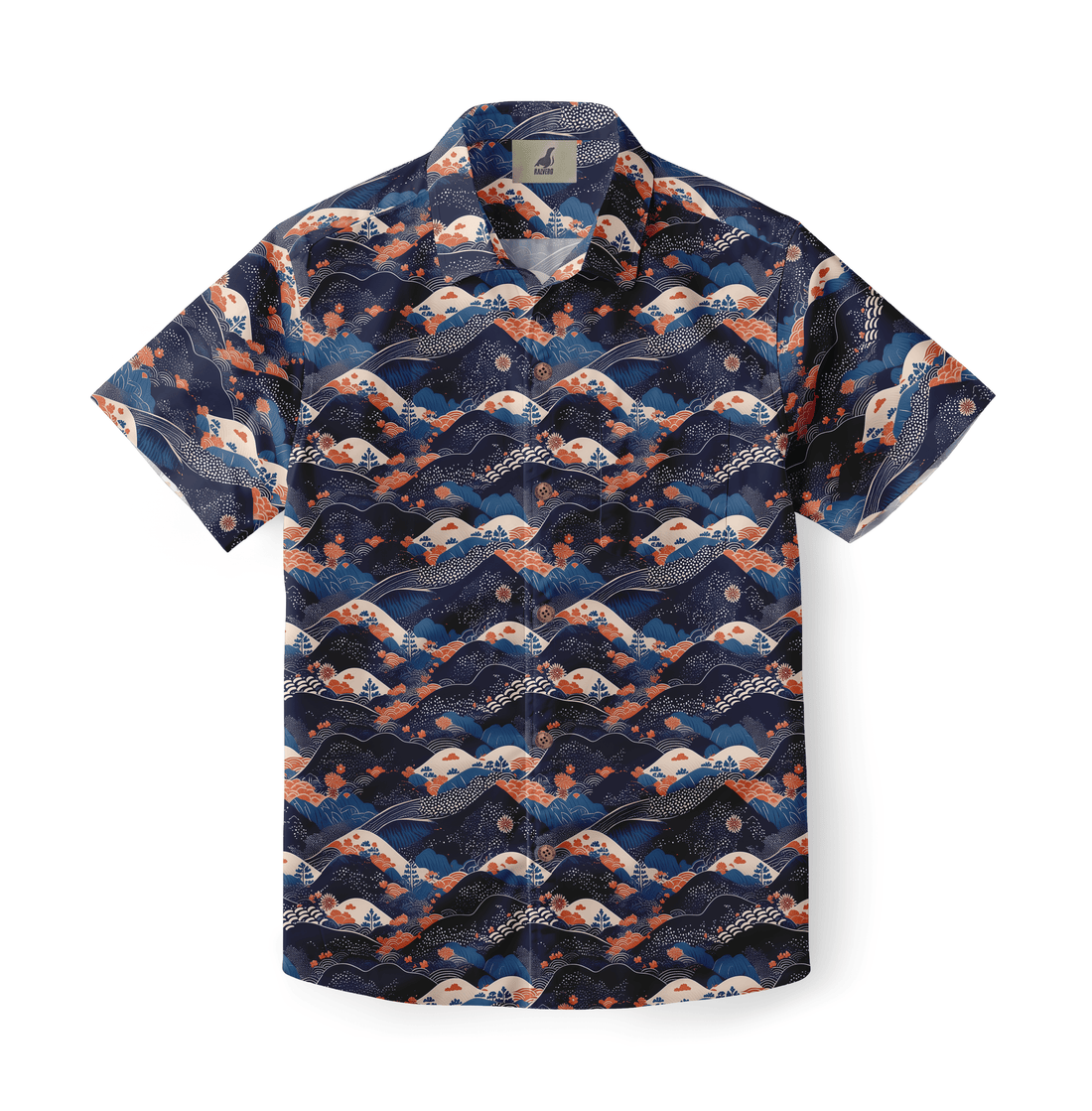The Hawaiian shirt is much more than a simple piece of clothing. It is a wearable artifact, rich with history and cultural significance. Each vintage Aloha shirt tells a story of a specific era. It captures the art, attitudes, and aspirations of the past. To truly appreciate this garment, one must explore The Connection Between Hawaiian Shirts and Vintage Culture. This relationship is not merely incidental. The Hawaiian shirt did not just exist within vintage culture; it actively shaped and defined it. From the post-war optimism of the 1950s to the rebellious surf scene of the 1970s, the Aloha shirt was there. It served as a vibrant canvas for the 20th century's evolving leisure aesthetic.
The Golden Age: The 1930s to 1950s
The story begins in the 1930s, but the "Golden Age" of the Aloha shirt truly flourished after World War II. As servicemen returned home from the Pacific, they brought these colorful shirts with them. This introduced the unique style to mainland America. Simultaneously, affordable air travel made Hawaii an accessible paradise. Tourists flocked to the islands, eager to bring home a piece of their vacation. This created a booming market for high-quality, beautifully crafted shirts. The shirts from this era are highly prized by collectors today. They were typically made from silky rayon fabric. Their prints often featured intricate, artistic depictions of island life, including scenic landscapes and cultural motifs.
Key Characteristics of an Authentic Vintage Aloha Shirt
Identifying a true vintage piece involves looking for specific details. These markers of quality and age are what collectors and enthusiasts seek. They separate an authentic historical garment from a modern reproduction.
-
Fabric Type: Early shirts (1930s-50s) were predominantly made of rayon crepe or silk.
-
Buttons: Natural materials like coconut shell, wood, or mother-of-pearl were common.
-
Matched Pocket: The chest pocket pattern aligns perfectly with the shirt's body pattern.
-
Collar Style: Look for a classic camp collar with a loop closure at the neck.
-
Print Technique: Early prints have a unique richness and depth of color.
-
Label and Brand: The manufacturer's label is a key indicator of age and origin.
These characteristics are the heart of the vintage Aloha shirt history. The use of rayon provided a beautiful drape that showcased the elaborate prints. Natural buttons added an authentic, handcrafted feel. The matched pocket was a sign of meticulous craftsmanship. It showed the maker valued artistry over mass production. For anyone interested in vintage clothing, these details are not just features. They are clues that tell the story of the garment's creation and its place in fashion history.
The Connection Between Hawaiian Shirts and Vintage Culture: Tiki Pop Culture
In the 1950s and 60s, America became fascinated with a romanticized version of Polynesian life. This phenomenon, known as Tiki culture, swept the nation. It manifested in themed bars, exotic cocktails, and "Exotica" music. The Hawaiian shirt became the unofficial uniform of this entire movement. It was the easiest way for someone in Ohio or California to adopt the Tiki lifestyle. Wearing an Aloha shirt was a form of escapism. It allowed people to feel connected to a distant, idyllic paradise. The shirt's vibrant prints of tropical flowers, tikis, and outrigger canoes perfectly matched the aesthetic of the era.
This period cemented the shirt's place in the American cultural imagination. It was no longer just a souvenir from a trip. It was a key component of a popular subculture. The shirt was worn to backyard luaus and local Tiki bars. It was a symbol of leisure, fun, and a touch of exotic mystery. This era produced some of the most sought-after and collectible prints. The Tiki culture fashion trend ensured the Hawaiian shirt's enduring legacy as a piece of mid-century Americana.
Hollywood's Influence on Vintage Aloha Shirt History
Hollywood played a massive role in popularizing the Aloha shirt. Films set in Hawaii or featuring military life in the Pacific showcased the garment to a global audience. One of the earliest and most significant appearances was in the 1953 classic, "From Here to Eternity." Actors like Montgomery Clift and Frank Sinatra wore Aloha shirts. This depicted them as a standard part of life in Hawaii. This normalized the style for mainstream audiences.
The ultimate boost, however, came from Elvis Presley. His 1961 film "Blue Hawaii" was a technicolor advertisement for both the islands and their signature shirt. The image of Elvis in a red and white floral shirt is legendary. It is one of the most iconic moments in both film and fashion history. After the movie's release, demand for Hawaiian shirts skyrocketed. Everyone wanted to capture a piece of the King's effortless island cool. Hollywood transformed the Aloha shirt from a regional garment into a global fashion icon.
Vintage Hawaiian Shirt Eras: A Comparative Look
| Feature | "Golden Age" (1940s-50s) | "Surf Culture" (1960s-70s) |
|---|---|---|
| Primary Fabric | Rayon Crepe, Silk | Cotton, Polyester Blends |
| Primary Print Theme | Scenic, cultural, intricate florals. | Bold graphics, bright abstract florals. |
| Color Palette | Often richer, more complex color schemes. | Brighter, higher-contrast, psychedelic colors. |
| Cultural Context | Post-war leisure, Tiki culture, tourism. | Surf culture, counter-culture, youth movement. |
| Fit | Often a fuller, boxier cut. | Became progressively slimmer and more fitted. |
The evolution of the Hawaiian shirt reflects broader changes in society. As the table above shows, the garment transformed significantly between the Golden Age and the Surf Culture era. The shift from luxurious rayon to practical cotton made the shirts more affordable and accessible to a younger audience. The prints became louder and more graphic, mirroring the bold aesthetics of the 1960s and 70s. This change in materials and design signaled a shift in the shirt's meaning. It moved from a symbol of sophisticated resort wear to an emblem of youthful rebellion and freedom.
The Connection Between Hawaiian Shirts and Vintage Culture: The 60s and 70s Surf Scene
As Tiki culture began to fade, a new subculture adopted the Hawaiian shirt: the surf scene. Surfers in California, Australia, and Hawaii were drawn to the shirt's comfort and expressive nature. It was the perfect garment to throw on after a session in the water. The shirt's image shifted from the cocktail-sipping lounge lizard to the sun-bleached, athletic surfer. This era gave birth to a new style of Aloha shirt. The prints became brighter and bolder. Psychedelic colors and abstract floral patterns became popular.
Brands began producing shirts on more durable and affordable cotton fabrics. This made them better suited to the rugged, outdoor lifestyle of a surfer. The shirt came to symbolize the "hang loose" ethos of surf culture. It was about freedom, a connection to the ocean, and a rejection of mainstream conformity. This period solidified the shirt's status as a symbol of alternative and counter-cultural movements. It was no longer just for tourists; it was for rebels.
The 1980s and the "Magnum, P.I." Revival
After the 70s, the shirt's popularity waned slightly. It then came roaring back into the mainstream in the 1980s. This revival was almost single-handedly driven by one man: Tom Selleck. His character, Thomas Magnum, in the hit TV show "Magnum, P.I.," was rarely seen without a Hawaiian shirt. His signature red "jungle bird" shirt became an icon of 80s style. The show, set in Hawaii, presented a cool, adventurous, and masculine image. Magnum was a charismatic private investigator who lived a life of excitement.
This portrayal introduced the Aloha shirt to a new generation. It successfully blended the shirt's leisurely roots with an element of action and intrigue. The style of the 80s shirt was distinct. It was often worn slightly open at the chest and tucked into high-waisted jeans. The fit was still relaxed but less boxy than the earliest versions. The "Magnum, P.I." era proved the Hawaiian shirt's incredible staying power. It could be endlessly reinterpreted for new decades and new audiences.
The Enduring Appeal: Why Collectors and Enthusiasts Seek Vintage Hawaiian Shirts
Today, there is a thriving market for vintage Hawaiian shirts. Collectors and style enthusiasts seek out these garments for many reasons. Rarity is a major factor. A shirt with a rare print from a famous brand like Kamehameha or Kahala can be worth a significant amount. The artistry of the prints is another draw. Many mid-century designs are considered masterpieces of textile art. Their complex patterns and beautiful color combinations are unmatched by modern reproductions.
Wearing a genuine vintage shirt is also a statement. It shows an appreciation for history, quality, and sustainable fashion. It is a way to own a unique piece of clothing that has its own story. The craftsmanship of these older garments, from the rayon fabric to the coconut buttons, is often superior to that of contemporary fast fashion. This combination of history, art, and quality is what makes the vintage Hawaiian shirt so endlessly appealing.
The Connection Between Hawaiian Shirts and Vintage Culture: A Lasting Legacy
The Hawaiian shirt is not just an item found within vintage culture; it is a driving force that helped create it. Its journey mirrors the story of 20th-century American leisure. From the first wave of tourism to the rise of Tiki bars, from Hollywood films to the California surf scene, the Aloha shirt was always present. It absorbed the spirit of each era and reflected it back in its vibrant prints. This deep, intertwined history is what makes the garment so special. Wearing a Hawaiian shirt is about more than just fashion. It is about connecting with a rich and colorful past. It is a tribute to the enduring power of style as a cultural artifact.
Frequently Asked Questions
What is the most valuable type of vintage Hawaiian shirt?
The most valuable and sought-after vintage shirts are typically those from the "Golden Age" of the 1940s and early 1950s. Shirts made from rayon crepe with intricate, artistic, and rare prints from iconic brands like Kamehameha Garment Company are particularly prized by collectors.
How can I tell if my Hawaiian shirt is vintage?
Look for several key indicators. Check the fabric; early vintage is often 100% rayon. Look for natural buttons made of coconut or wood. Check for a matched chest pocket. Finally, research the brand on the label. Labels from defunct or early brands are a clear sign of a vintage piece.
What is "Tiki culture"?
Tiki culture was a pop culture movement in the United States during the 1950s and 60s. It was based on a romanticized, kitschy interpretation of Polynesian and South Pacific cultures. It was characterized by Tiki bars serving exotic cocktails, "Exotica" music, and a design aesthetic featuring bamboo, rattan, and Tiki carvings. The Hawaiian shirt was the quintessential fashion item of this movement.








